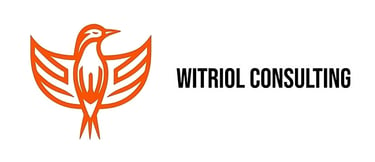Leveraging the 8(a) Certification for Market Leadership and Sustainable Growth
In today’s competitive business landscape, small businesses often struggle to break into lucrative markets dominated by well-established firms. The U.S. Small Business Administration’s (SBA) 8(a) Business Development Program offers a powerful avenue for qualifying companies to gain access, visibility, and credibility in the federal contracting arena. This guide explores how small businesses can use their 8(a) certification not just to win contracts but to establish themselves as market leaders, build a distinctive brand, disrupt industry norms, and sustain a long-term sales pipeline. Whether you’re newly certified or planning to apply, this roadmap provides actionable insights to make the most of your 8(a) status.
MICROSOFTEQORGANIZATIONMENTORCOMMAND ECONOMYSTRATEGIC PARTNERSHIPSMANAGEMENT CONSULTINGTRADITIONAL ECONOMYMERGERSMARKET ECONOMY8(A)CONSULTINGPARTNERSHIPSGROWTHACQUISITIONSLEADERSHIPSTRATEGYCYBERSECURITYSUSTAINABLE GROWTHGOVERNMENT CONTRACTSFEDERAL CONTRACTINGMARKETING STRATEGYECONOMICSMENTORSHIPCOMPLIANCECLIENTSSUCCESSTRAININGCREATING VALUECLIENT RELATIONSHIPSFEDERAL CONTRACTS
Shaun Witriol
7/17/20254 min read


Leveraging the 8(a) Certification for Market Leadership and Sustainable Growth
1. Introduction
In today’s competitive business landscape, small businesses often struggle to break into lucrative markets dominated by well-established firms. The U.S. Small Business Administration’s (SBA) 8(a) Business Development Program offers a powerful avenue for qualifying companies to gain access, visibility, and credibility in the federal contracting arena.
This guide explores how small businesses can use their 8(a) certification not just to win contracts but to establish themselves as market leaders, build a distinctive brand, disrupt industry norms, and sustain a long-term sales pipeline. Whether you’re newly certified or planning to apply, this roadmap provides actionable insights to make the most of your 8(a) status.
2. Understanding the 8(a) Certification
What Is the 8(a) Certification?
The 8(a) Business Development Program is a nine-year initiative by the SBA designed to assist small, disadvantaged businesses in competing for federal contracts. The program offers a mix of technical assistance, sole-source opportunities, and mentorship to eligible firms.
Eligibility Criteria
To qualify, a business must:
Be at least 51% owned and controlled by U.S. citizens who are socially and economically disadvantaged.
Be a small business per SBA size standards.
Demonstrate potential for success and good character.
Have been in operation for at least two years (some waivers are possible).
Benefits of 8(a) Certification
Access to set-aside and sole-source federal contracts.
Invitations to business development training and events.
SBA support in navigating the federal marketplace.
Greater visibility in databases such as SAM.gov and DSBS.
3. Building Market Leadership with 8(a) Certification
The 8(a) certification is more than a ticket to government contracts—it’s a reputation enhancer.
Key Strategies:
Use 8(a) as a proof point of credibility: Emphasize that your firm has been vetted and certified by the SBA.
Build a federal-facing capability statement: Clearly showcase your past performance, core competencies, and contract vehicles.
Target high-impact agencies: Focus on agencies with 8(a) set-aside goals (e.g., DoD, DHS, HHS).
Thought leadership: Publish content or host webinars on solving federal problems in your industry niche.
When paired with quality service delivery, the 8(a) designation positions your firm as a trustworthy partner in the public sector.
4. Creating Distinction in the Marketplace
Your 8(a) status can serve as a branding differentiator, especially in a crowded service or product field.
Branding Tactics:
Include 8(a) certification in all marketing collateral, signatures, LinkedIn bios, and proposals.
Build an “About Us” page that tells the story of your 8(a) journey, leadership, and mission.
Emphasize social impact: Many agencies value diversity, equity, and inclusion. 8(a) firms are natural allies in fulfilling those goals.
Offer bundled solutions in collaboration with other 8(a) or small businesses to stand out from primes.
The goal is to move from being “another small business” to a memorable, mission-driven enterprise.
5. Disruption of Market Norms
Many 8(a) firms mistakenly aim only to "fit in"—but the certification gives you the platform to stand out and disrupt.
How to Disrupt:
Offer agile, tech-forward solutions where traditional vendors rely on legacy approaches.
Pursue underserved markets within federal contracting (e.g., environmental justice, digital transformation, data equity).
Adopt a consultative sales approach that redefines the vendor-client relationship.
Build niche micro-contracting frameworks that allow for flexibility and speed—something large firms often can’t match.
The 8(a) space thrives on innovation. Take calculated risks and offer new ways of solving old problems.
6. Building a Sustainable Sales Pipeline
The 8(a) program opens doors—but your job is to walk through them, repeatedly.
Pipeline Strategies:
Target agencies with published 8(a) goals and procurement forecasts.
Use SBA’s SubNet and SAM.gov to identify opportunities early.
Build a teaming strategy with complementary firms—both other 8(a) firms and larger primes.
Respond to RFIs and Sources Sought regularly to build visibility and relationships.
Create templates for proposals, past performance, and pricing to reduce response time.
Build a CRM and track agency relationships, touches, and pipeline stages.
Consistency builds momentum. A successful 8(a) business has a pipeline that evolves from manual pursuit to strategic engagement.
7. Case Studies and Success Stories
Case Study 1: IT Firm Secures $20M in 3 Years
A Maryland-based cybersecurity company used its 8(a) status to win a sole-source contract with DHS. By delivering exceptional service, the firm parlayed that contract into multiple task orders, growing from 5 to 40 employees.
Case Study 2: Environmental Services Firm Becomes Prime
A California-based environmental consulting company used its 8(a) designation to partner with engineering primes on large infrastructure projects. Within five years, they won a direct award from the EPA and became a prime on multiple IDIQs.
Common Themes:
Leveraging mentorship and training.
Proactive agency engagement and BD investment.
High-quality past performance and client retention.
8. Challenges and Considerations
While powerful, the 8(a) program comes with its own hurdles.
Common Challenges:
Limited internal resources to pursue contracts at scale.
Complex federal compliance requirements (e.g., SAM registration, DCAA audits).
Difficulty standing out if not actively networking or responding to opportunities.
Practical Solutions:
Invest in proposal infrastructure (templates, partners, graphics).
Hire or outsource capture management support early in your 8(a) tenure.
Build a compliance checklist and ensure you're audit-ready.
Regularly meet with your SBA Business Opportunity Specialist (BOS).
Proactive planning separates long-term 8(a) successes from businesses that “expire” without momentum.
9. Conclusion
The SBA 8(a) certification is more than just a contracting advantage—it’s a strategic growth lever for small businesses. When leveraged intentionally, it can lead to market distinction, disruption, and leadership. From sole-source wins to scalable partnerships and long-term credibility, the program offers unmatched potential for ambitious firms ready to execute.
The key is strategic execution: brand smartly, build a repeatable sales process, form meaningful partnerships, and focus on consistent value delivery.
10. Call to Action
If you’re a small business owner seeking to elevate your position in the federal market, the 8(a) certification could be the opportunity you need.
Next Steps:
Evaluate your eligibility and gather supporting documentation (financials, ownership, narrative).
Apply through SBA’s Certify platform: https://certify.sba.gov
Reach out to local PTACs or MBDA centers for application guidance.
Start building your capability statement and pipeline strategy now—even if you’re just applying.
Witriol Consulting and others like it have used the 8(a) program to drive real growth. The path is not easy—but it is proven. The only question is: Will you leverage it?
👉 Ready to position yourself as a standout subcontractor?
Visit us at www.witriolconsulting.com or email shaun@witriolconsulting.com to schedule a strategy session.
Like and follow Witriol Consulting on LinkedIn, Instagram, Facebook, and YouTube for more insights and strategies on effective leadership and time management.
Current Certifications
Small Local Business Enterprise (SLBE) - (San Diego)
Local Small Business Enterprise - (LSBE) - (Los Angeles)
Minority Owned Business (MBE) - (San Diego and Los Angeles, Federal)
Small Business (Micro) - (California)
Disadvantaged Business Enterprise - (California, Arizona, Oregon, Hawaii)
Small Disadvantaged Business - (Federal)
Asian Pacific Business Enterprise - (Federal)
Pending Certifications
8a - (Federal)
© 2024. All rights reserved.


certifications
consultations
